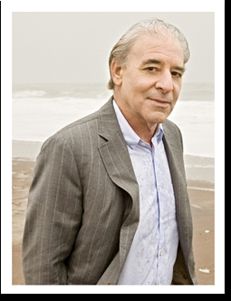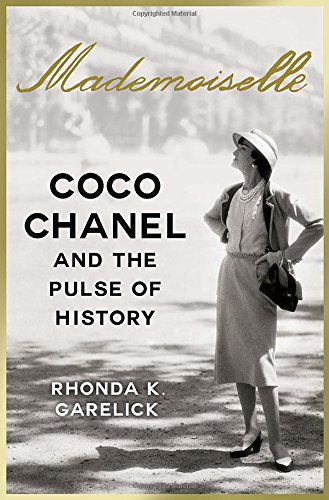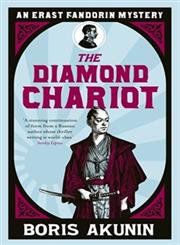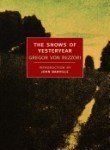
Alan Furst
Alan Furst is an American author of historical spy novels. Furst has been called "an heir to the tradition of Eric Ambler and Graham Greene," whom he cites along with Joseph Roth and Arthur Koestler as important influences.

Alan Furst is an American author of historical spy novels. Furst has been called "an heir to the tradition of Eric Ambler and Graham Greene," whom he cites along with Joseph Roth and Arthur Koestler as important influences.

Here is the very essence of Paris; the story of Chanel, the 1930s and 1940s, the good, the bad, and the lovely. A detailed and well-written biography, drenched in the spirit of a magnificent city and perfect for traveling far from wherever you are.
NATIONAL BESTSELLER Certain lives are at once so exceptional, and yet so in step with their historical moments, that they illuminate cultural forces far beyond the scope of a single person. Such is the case with Coco Chanel, whose life offers one of the most fascinating tales of the twentieth centurythrowing into dramatic relief an era of war, fashion, ardent nationalism, and earth-shaking changehere brilliantly treated, for the first time, with wide-ranging and incisive historical scrutiny. Coco Chanel transformed forever the way women dressed. Her influence remains so pervasive that to this day we can see her afterimage a dozen times while just walking down a single street: in all the little black dresses, flat shoes, costume jewelry, cardigan sweaters, and tortoiseshell eyeglasses on women of every age and background. A bottle of Chanel No. 5 perfume is sold every three seconds. Arguably, no other individual has had a deeper impact on the visual aesthetic of the world. But how did a poor orphan become a global icon of both luxury and everyday style? How did she develop such vast, undying influence? And what does our ongoing love of all things Chanel tell us about ourselves? These are the mysteries that Rhonda K. Garelick unravels in Mademoiselle. Raised in rural poverty and orphaned early, the young Chanel supported herself as best she could. Then, as an uneducated nineteen-year-old cafe singer, she attracted the attention of a wealthy and powerful admirer and parlayed his support into her own hat design business. For the rest of Chanels life, the professional, personal, and political were interwoven; her lovers included diplomat Boy Capel; composer Igor Stravinsky; Romanov heir Grand Duke Dmitri; Hugh Grosvenor, the Duke of Westminster; poet Pierre Reverdy; a Nazi officer; and several women as well. For all that, she was profoundly alone, her romantic life relentlessly plagued by abandonment and tragedy. Chanels ambitions and accomplishments were unparalleled. Her hat shop evolved into a clothing empire. She became a noted theatrical and film costume designer, collaborating with the likes of Pablo Picasso, Jean Cocteau, and Luchino Visconti. The genius of Coco Chanel, Garelick shows, lay in the way she absorbed the zeitgeist, reflecting it back to the world in her designs and in what Garelick calls wearable personalitythe irresistible and contagious style infused with both world history and Chanels nearly unbelievable life saga. By age forty, Chanel had become a multimillionaire and a household name, and her Chanel Corporation is still the highest-earning privately owned luxury goods manufacturer in the world. In Mademoiselle, Garelick delivers the most probing, well-researched, and insightful biography to date on this seemingly familiar but endlessly surprising figurea work that is truly both a heady intellectual study and a literary page-turner. Praise for Mademoiselle A detailed, wry and nuanced portrait of a complicated woman that leaves the reader in a state of utterly satisfying confusionblissfully mesmerized and confounded by the reality of the human spirit.The Washington Post Writing an exhaustive biography of Chanel is a challenge comparable to racing a four-horse chariot. . . . This makes the assured confidence with which Garelick tells her story all the more remarkable.The New York Review of Books Broadly focused and beautifully written.The Wall Street Journal From the Hardcover edition.

Boris Akunin writes sharp and clever historical mysteries. What makes him different from other novelists is a kind of salty wit and a sinfully ironic eye on the life and times of an older Russia. In "The Diamond Chariot," the detective Erast Fandorin tangles with spies during the Russo- Japanese War of 1905, a novel set in St. Petersburg, which includes action on the Trans-Siberian Express.
The first of the interlinked plotlines is set in Russia during the Russo-Japanese War in 1905. Fandorin is charged with protecting the Trans-Siberian Railway from Japanese sabotage in a pacy adventure filled with double agents and ticking bombs. Then we travel back to the Japan of the late 1870s. This is the story of Fandorin's arrival and life in Yokohama, his first meeting with Masa and the martial arts education that came in so handy later. He investigates the death of a Russian ship-captain, fights for a woman, exposes double-agents in the Japanese police, fights against, and then with the ninjas, and becomes embroiled in a shocking finale that interweaves the two stories and ties up the series as a whole.

One of my favorite books of all time is Gregor von Rezzori's "The Snows of Yesteryear," an exquisitely written memoir of the author's birthplace, Czernowitz in the Bukovina, a lost corner of the Ukraine. In the narrative of von Rezzori's childhood and early life, we find out exactly what was lost. Transcendent is the only word for this book.
Gregor von Rezzori was born in Czernowitz, a onetime provincial capital of the Austro-Hungarian Empire that was later to be absorbed successively into Romania, the USSR, and the Ukrainea town that was everywhere and nowhere, with a population of astonishing diversity. Growing up after World War I and the collapse of the empire, Rezzori lived in a twilit world suspended between the formalities of the old nineteenth-century order which had shaped his aristocratic parents and the innovations, uncertainties, and raw terror of the new century. The haunted atmosphere of this dying world is beautifully rendered in the pages of The Snows of Yesteryear. The book is a series of portraitsamused, fond, sometimes appallingof Rezzoris family: his hysterical and histrionic mother, disappointed by marriage, destructively obsessed with her childrens health and breeding; his father, a flinty reactionary, whose only real love was hunting; his haughty older sister, fated to die before thirty; his earthy nursemaid, who introduced Rezzori to the power of storytelling and the inevitability of death; and a beloved governess, Bunchy. Telling their stories, Rezzori tells his own, holding his early life to the light like a crystal until it shines for us with a prismatic brilliance.